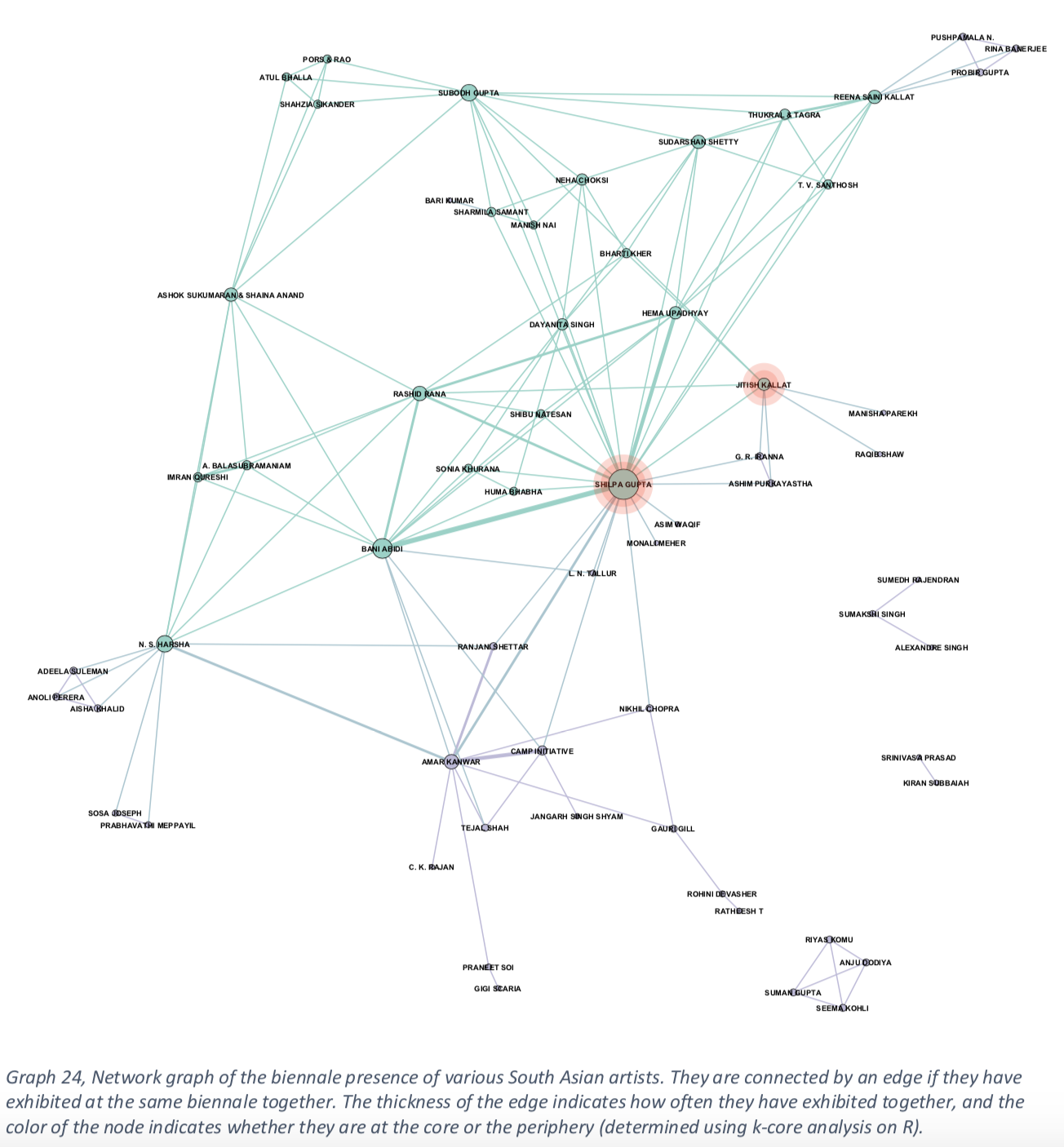Moving Out, Looking In: Representation in the Globalized Indian Contemporary Art Scene From 2000 to 2015
My thesis looks at the question of what it means to be a “successful” artist from India in the global contemporary art scene. The Indian art world rapidly evolved in the 2000s, as the economic liberalization from the decade before created a class of Indians—both resident and diasporic—who were wealthy, cosmopolitan and highly interested in new forms of cultural consumption. Meanwhile, international curators and critics were taking note of Indian contemporary art, touring it around the world alongside the works of Indian modernists from the 1950s. In my thesis, I argue, using quantitative and ethnographic methods, that there came to be a discrete set of contemporary Indian artists who were continually reexhibited around the world. These artists contended with the responsibility of representing India for the sake of a global viewership, and they each addressed this responsibility in particular ways. I explore the careers of two well-known contemporary Indian artists, Jitish Kallat and Shilpa Gupta, in order to examine how their work evolved over the 2000s and into the 2010s, as the Indian art scene continued to be shaped by economic and political forces.
